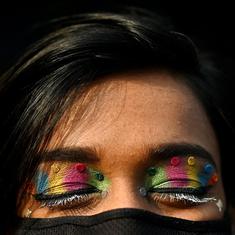Adam McKay’s upcoming comedy Renfield reimagines the fate of the vampire Dracula’s most fanatic devotee. In McKay’s version, which is set in the present, Renfield (Nicholas Hoult), rather than begging to be granted immortality, decides to liberate himself from his undead lord (Nicolas Cage).
Renfield brings us back to the cult of Dracula, created by Irish writer Bram Stoker in 1897 and sending gleeful shivers down the spine ever since. In 1922, German director FW Murnau directed the first unofficial adaptation, Nosferatu. The first official adaptation came from Hollywood in 1931. Among the numerous directors who have tackled Stoker’s novel, Francis Ford Coppola’s version is one of the finest.
Bram Stoker’s Dracula (1992), which is available on Netflix, stays largely faithful to the source material while also paying tribute to previous films on Dracula, notably the ones starring the dangerously attractive Christopher Lee. Coppola places the novel’s erotic subtext at the centre of the narrative, in the bargain giving a crucial role to the woman who lures Dracula out of his castle in Transylvania.
A back story reveals Dracula’s origins in the fifteenth century and the tragic suicide of his wife Elisabeta. In 1897, Dracula (Gary Oldman), posing as a count in Romania, sees a photograph of Mina, the wife-to-be of the naive solicitor Jonathan (Keanu Reeves). Jonathan has been sent to Romania to finalise the sale of property in London to Dracula.
The vampire shoves Jonathan into the clutches of a trio of blood-sucking seductresses and makes for London, where he shapeshifts into a handsome prince. Mina (Winona Ryder), who is young, well-behaved, as virtuous as her friend Lucy (Sadie Frost) is sexually adventurous, finds herself unable to resist Dracula.
The cast includes Tom Waits as the deranged Renfield, Anthony Hopkins as the fire-breathing vampire hunter Abraham Van Helsing, and Richard E Grant as one of Lucy’s hapless suitors. But the most memorable scenes are the sexually charged moments between the hunter and the hunted, he bent on sinking his fangs into her neck and she unable to fathom why he seems so familiar. Indians who believe in reincarnation won’t be one bit surprised at the mesmeric hold Dracula has over Mina.
Coppola’s version has bite and beauty, a style that has been inspired by silent and classic cinema as well as modern aesthetics. Computer-generated effects are eschewed in favour of the kind of tricks that would have been used at the time of the story’s setting, which coincides with the birth of cinema.
One of Coppola’s favourite motifs is a pair of eyes or a single eye, either as a striking visual detail or as a match cut between shots. It’s fitting, since the film is a visual feast from start to finish.

Japanese designer Eiko Ishioka’s unforgettable costumes straddle period and avant-garde styles. There is foreshadowing in Dracula’s crimson scarab-like armour before he becomes a vampire and the sensuous robes worn by Lucy, the first victim in London of Dracula’s blood-lust. Mina’s high collars and fitting dresses give way to flowing gowns as her passion for Dracula grows. One of Dracula’s outfits is modelled on the gold-drenched paintings of Gustav Klimt.
Wojciech Kilar’s cello-heavy score is sinister as well as plangent, in keeping with Coppola’s vision of the doomed Dracula-Mina romance. Both old-fashioned and contemporary, Coppola’s movie is as timeless as Dracula himself.
Also read in the ‘Start the week with a film’ series:
The very violent and very clever ‘Battle Royale’










